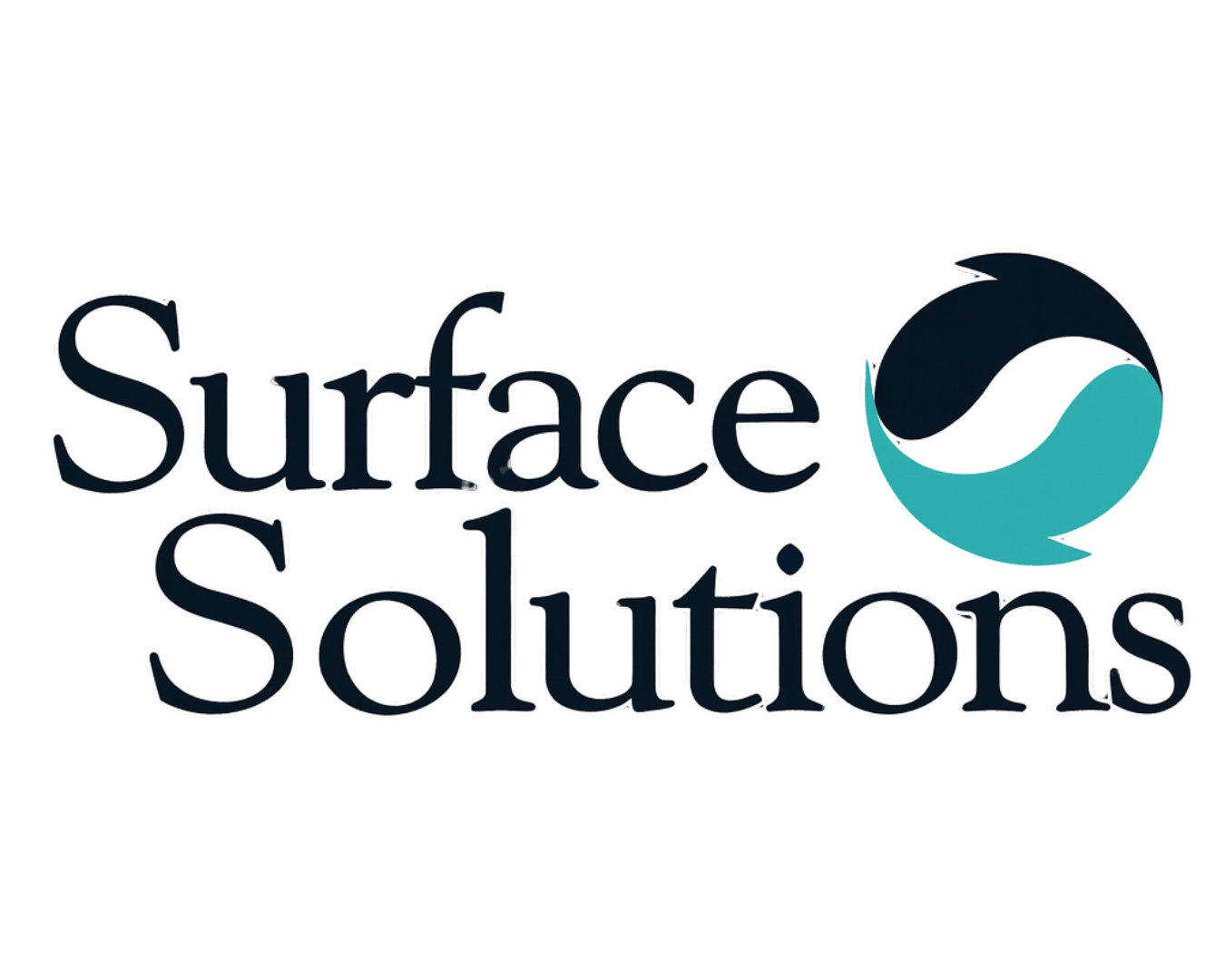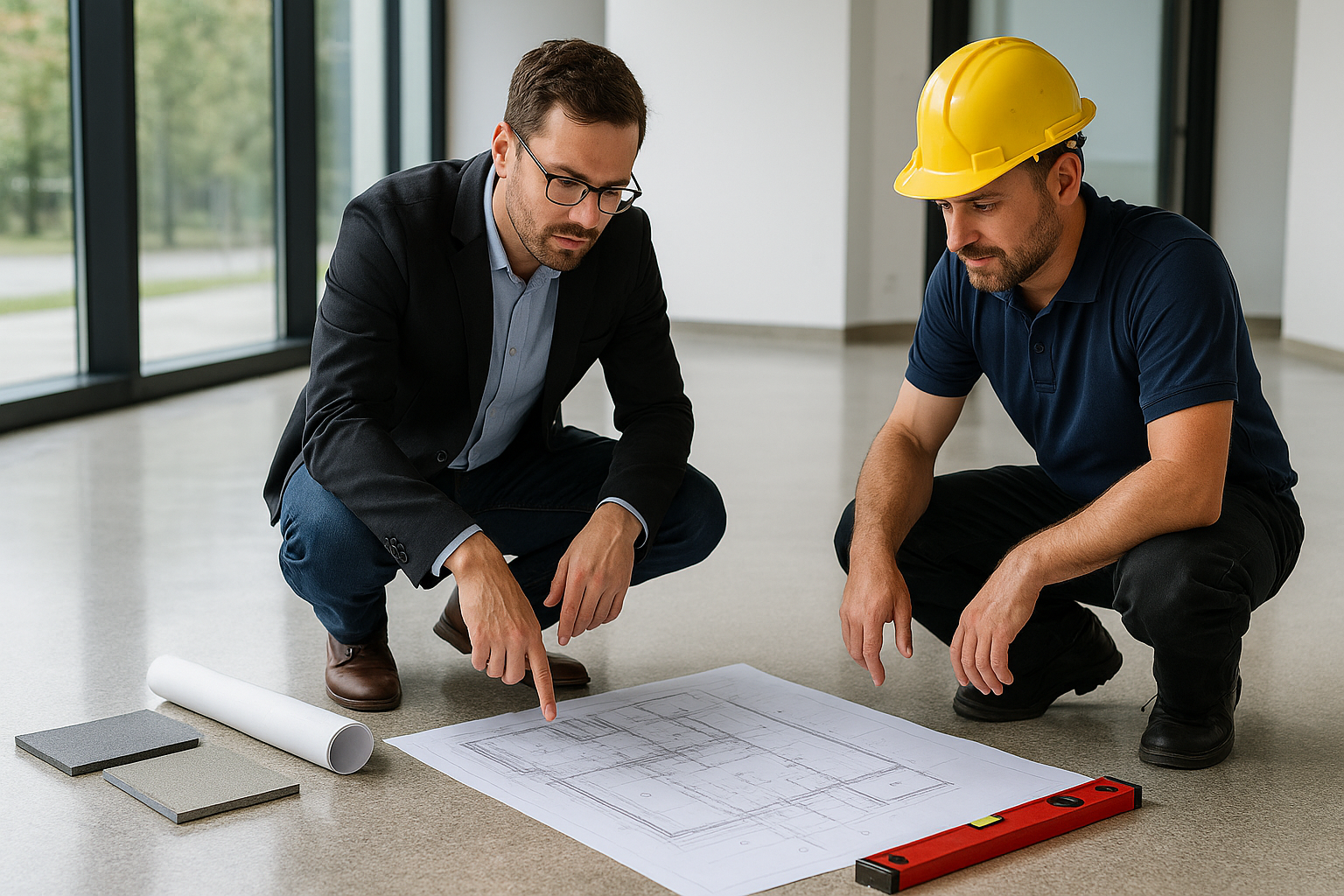The Disconnect Between Design and Performance
Architects design for aesthetics and flow; installers design for longevity and compliance. Without collaboration, the result can fall short on both sides.
Common issues when design and installation don’t align:
- Finishes that don’t meet slip or reflectivity standards.
- Decorative concepts that exceed substrate tolerances.
- Maintenance expectations that don’t match material performance.
- Premature wear in high-traffic or chemical-exposed areas.
A strong partnership between architect and flooring contractor eliminates these risks early — during design development, not during installation.
Turning Vision into Specification
Every successful flooring project begins with a collaborative specification process. Surface Solutions works closely with design teams to match materials and finishes to both the visual intent and the performance criteria of the space.
Step 1: Understand the Space
We start by evaluating use case: traffic loads, moisture levels, lighting, and cleaning practices.
Step 2: Identify Design Intent
The architect’s concept drives everything — whether it’s a minimalist satin polish or a high-gloss epoxy with branding inlays.
Step 3: Match the Right System
We translate intent into a technical solution, recommending:
- Polished concrete sheen and aggregate level
- Epoxy or urethane topcoats for durability
- Seamless cove bases for hygiene
- Moisture or impact mitigation systems if needed
By integrating design goals and environmental realities, we create a system that looks stunning and lasts for decades.
Polished Concrete as a Design Element
Polished concrete has become a design staple in retail, office, and public environments because it achieves architectural minimalism while offering measurable performance advantages.
Architectural benefits:
- Reflective surface amplifies natural light
- Neutral tone complements almost any color palette
- Aggregate exposure adds subtle texture and depth
- Stain and dye options support branding and wayfinding
Surface Solutions customizes polish level and gloss to match the designer’s aesthetic goals — from industrial matte to mirror-like clarity.
Epoxy and Urethane for Visual Impact
Epoxy flooring has evolved far beyond utilitarian finishes. Architects now use metallics, quartz blends, and pigmented coatings to create floors that feel luxurious and bespoke.
Popular design-driven options:
- Metallic epoxy for lobbies or showrooms
- Quartz broadcast systems for texture and color variation
- Clear urethane topcoats that preserve custom color work
For spaces that demand brand alignment or visual storytelling, these systems turn floors into design features.
Collaboration in Practice: Boutique Office Renovation, Jersey City NJ
A design firm approached Surface Solutions for a boutique office project featuring polished concrete with embedded brass divider strips. Working collaboratively, we adjusted the slab polish sequence to accommodate the inlay design without compromising flatness or surface clarity.
The final product achieved both architectural precision and the performance of an industrial-grade polish — proving that artistry and engineering can coexist beautifully.
Why Early Collaboration Matters
The best design outcomes happen when contractors and designers work side by side early in the project lifecycle. This partnership ensures:
- Specifications match environmental conditions
- Material lead times align with project schedules
- Mockups confirm visual outcomes before full installation
- Long-term maintenance is realistic for the client’s operation
When design intent and material science align, the result is a floor that performs like a system and presents like art.
Call 877-CSTM-FLR
Email carolina@cstmflr.com
Visit www.cstmflr.com


.png)
